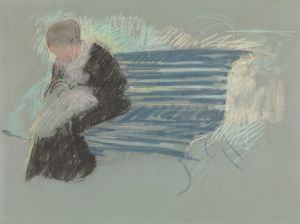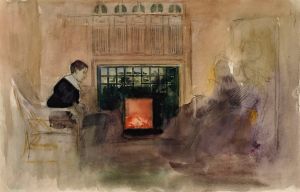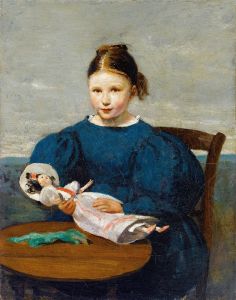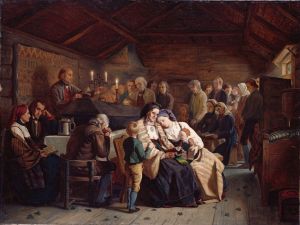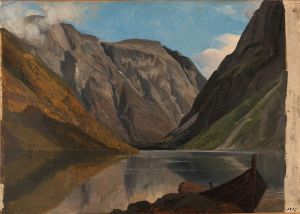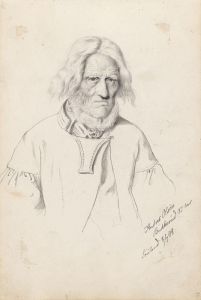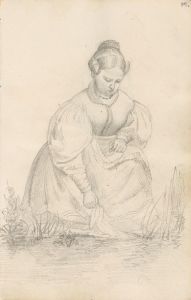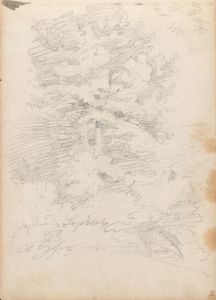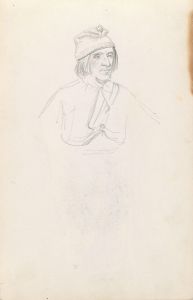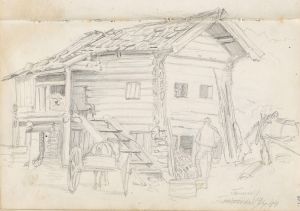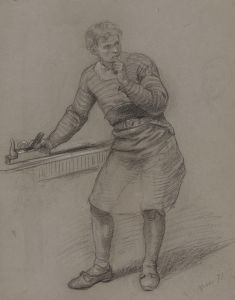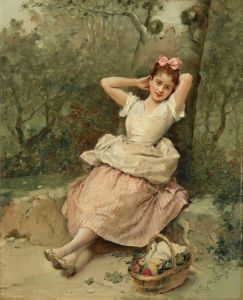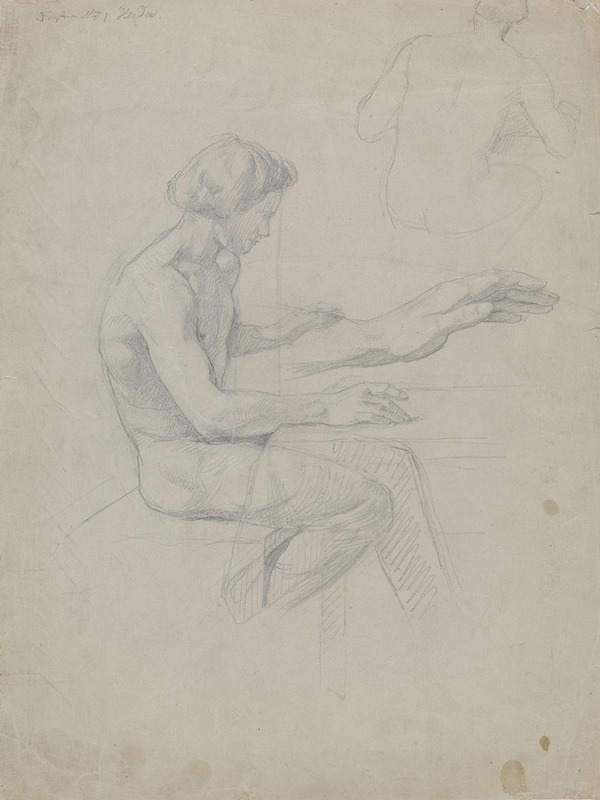
Sittende mann
A hand-painted replica of Adolph Tidemand’s masterpiece Sittende mann, meticulously crafted by professional artists to capture the true essence of the original. Each piece is created with museum-quality canvas and rare mineral pigments, carefully painted by experienced artists with delicate brushstrokes and rich, layered colors to perfectly recreate the texture of the original artwork. Unlike machine-printed reproductions, this hand-painted version brings the painting to life, infused with the artist’s emotions and skill in every stroke. Whether for personal collection or home decoration, it instantly elevates the artistic atmosphere of any space.
Adolph Tidemand was a prominent Norwegian painter in the 19th century, renowned for his contributions to the national romanticism movement. His works often depicted Norwegian folk life, traditions, and landscapes, capturing the essence of Norway's cultural heritage during a time of burgeoning national identity. One of his notable works is "Sittende mann," which translates to "Seated Man" in English.
"Sittende mann" is a painting that exemplifies Tidemand's focus on the everyday life and people of Norway. While specific details about this particular painting are not extensively documented, it is consistent with Tidemand's broader oeuvre, which often portrayed rural scenes and individuals in traditional Norwegian attire. His paintings are characterized by their attention to detail and the ability to convey the dignity and character of his subjects.
Tidemand's work was heavily influenced by his travels throughout Norway, where he meticulously studied and sketched the people and their environments. This dedication to authenticity is evident in "Sittende mann," as it likely reflects his commitment to portraying his subjects with respect and accuracy. His paintings served not only as artistic expressions but also as historical documents that preserved the cultural practices and appearances of 19th-century Norway.
Adolph Tidemand was born on August 14, 1814, in Mandal, Norway. He pursued his artistic education in Copenhagen and later in Düsseldorf, Germany, which was a hub for artists at the time. The Düsseldorf School of Painting, known for its detailed and realistic style, greatly influenced Tidemand's approach to art. He became one of the leading figures in the Düsseldorf school, and his works gained popularity both in Norway and abroad.
Throughout his career, Tidemand collaborated with other artists, most notably Hans Gude, with whom he created several famous works, including "Bridal Procession on the Hardangerfjord." While "Sittende mann" is not a collaborative piece, it shares the same ethos of capturing the spirit of Norwegian life.
Tidemand's paintings, including "Sittende mann," played a significant role in shaping the Norwegian national identity during the 19th century. At a time when Norway was seeking to establish its cultural independence, his works provided a visual narrative that celebrated the country's unique traditions and people. His art resonated with the public and contributed to a growing sense of pride and unity among Norwegians.
Adolph Tidemand passed away on August 25, 1876, but his legacy endures through his art, which continues to be celebrated for its historical and cultural significance. "Sittende mann," like many of his works, remains a testament to his skill as a painter and his dedication to preserving the essence of Norwegian life. While specific details about the painting's current location or exhibition history may not be widely available, it remains an important piece within the context of Tidemand's body of work and the broader narrative of Norwegian art history.





